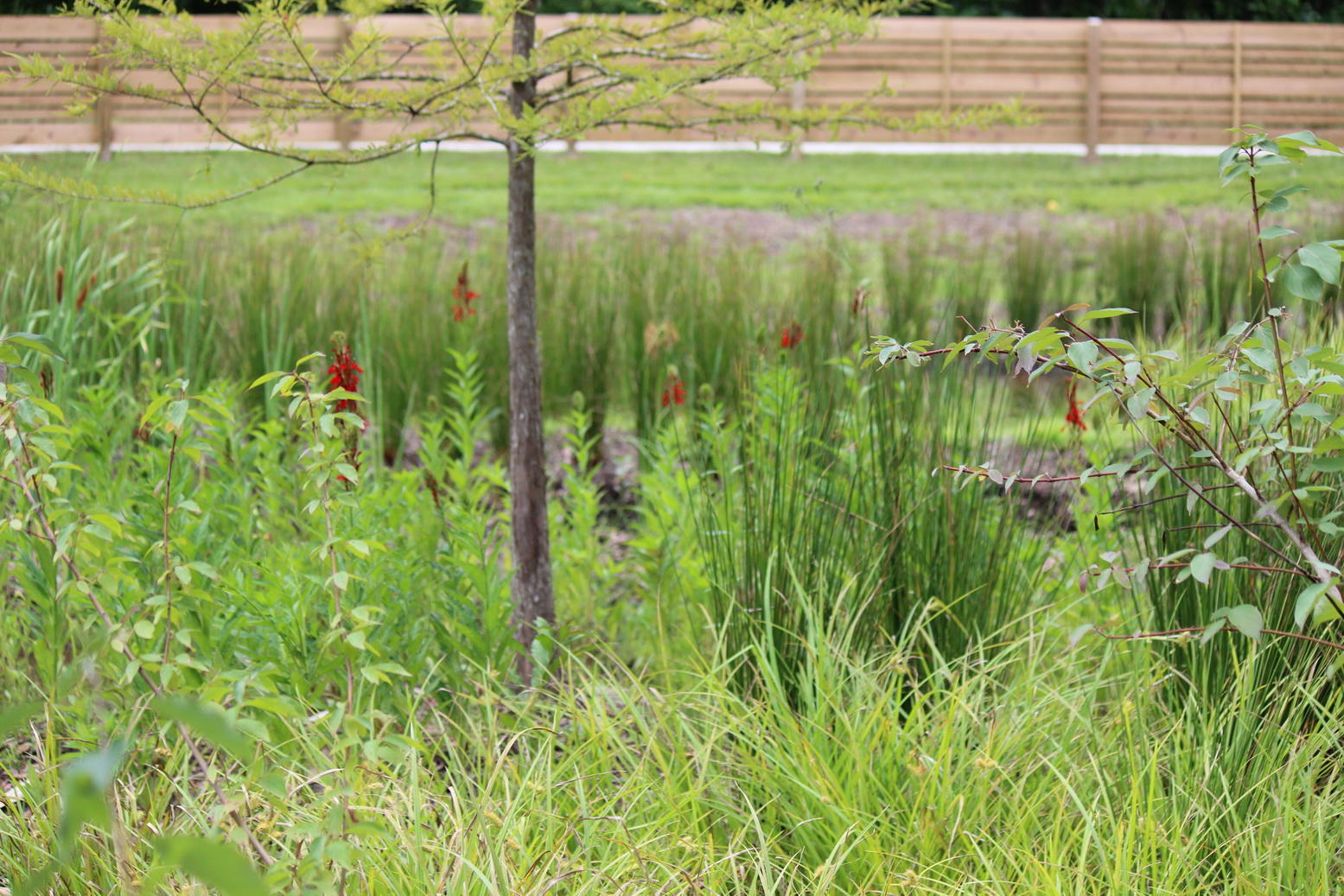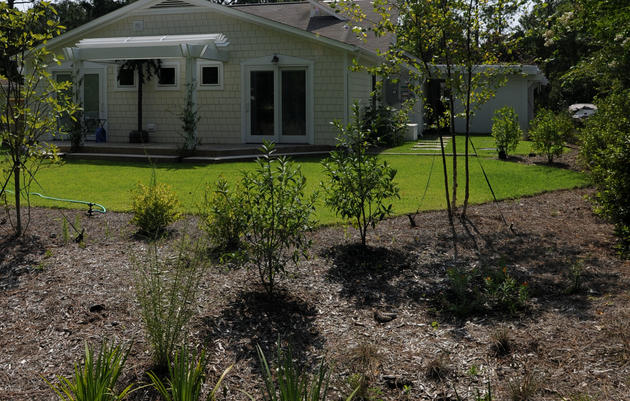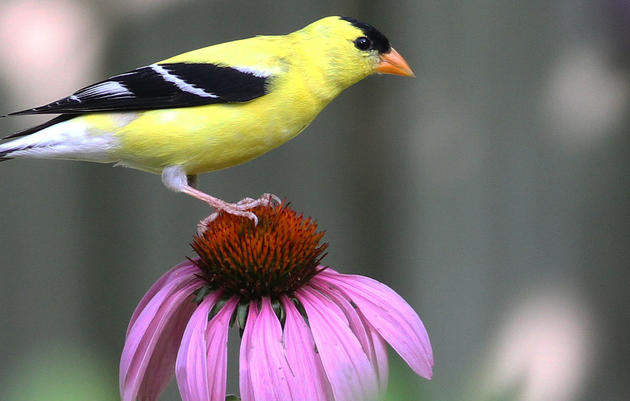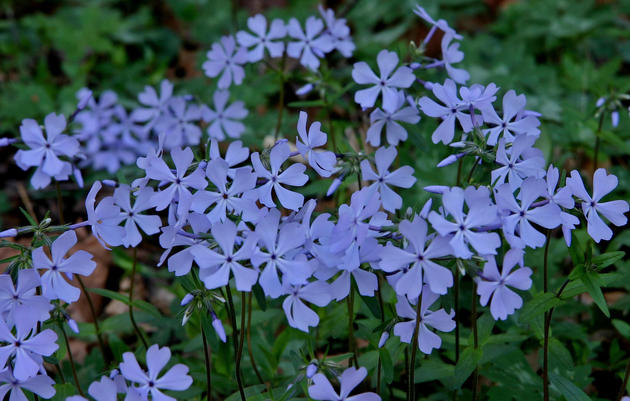Launched in 2013, Audubon North Carolina’s Bird-Friendly Communities initiative is a partnership program involving more than 20 organizations with a vision for creating a more bird-friendly North Carolina. This vision statement guides the goals and projects of the group: “Bird-friendly communities give birds the opportunity to succeed by providing connected habitat dominated by native plants, minimizing threats posed by the built environment, and engaging people of all ages and backgrounds in stewardship of nature.”
Please welcome guest-blogger Lara Berkley, member of Cape Fear Audubon Society, and a team member of Audubon North Carolina’s Bird-Friendly Communities program.
In this four-part series, learn from Wilmington-based landscape architect, Lara Berkley, how incorporating bird-friendly practices into architecture and landscape design can have a wide-reaching impact on the birds in your backyard and community at-large. Click here to read the first installment.
Why is incorporating bird-friendly practices important to Wilmington and North Carolina?
Wilmington, and the lower Cape Fear area, are heavily developed – New Hanover County is one of the smallest and most populated counties in North Carolina. Now that the economy has improved slightly, rapid development has resumed here and in adjacent Brunswick and Pender Counties, and we assume this trend is true for most of North Carolina. The lower Cape Fear area still has a few stunning natural areas, and despite the development, it is still considered to be a ‘biodiversity hotspot.’
As designers, we are privileged to be able to guide decisions about land use and construction, so we feel a tremendous obligation to maintain and improve the quality of life here for the entire living spectrum. For instance, once you visit the Green Swamp in April, or take a walk with a local ecologist and learn about some of the fascinating animal/plant/soil relationships that are present here, it becomes clear that nature, from the invertebrates and fungi, to the birds and flowers, is a big part of our local sense of place.
The best route to conservation is ‘learn, know, love and protect.’ Education (ours, and the client’s) is a critical part of design, and we feel that groups including Audubon, Cape Fear Riverwatch and the NC Native Plant Society are superb resources. A specific local example is the Painted Bunting, which happens to be a pretty charismatic species. When people learn that they will have better chances of seeing this beautiful little bird by keeping that band of shrubby, grassy native vegetation on their view property along a tidal creek, they tend to do everything they can to leave it in place. This activity happens to provide benefits for many other species as well – in terms of habitat, water quality and distinct sense of place.
What are some ways that your projects affect the greater area?
For our projects, we encourage economy of materials, and efficiency of labor, energy and water usage, all of which directly or indirectly contribute to bird-friendly habitat. Specifying Forest Stewardship Council (FSC) wood preserves forest habitat somewhere else on the planet. Using energy-efficient and water-efficient fixtures and appliances contributes less to the demand for fossil fuels and water, whose extraction damages wildlife habitat at the immediate local scale, as well as on a long-term time scale.

How have your projects impacted the well being of birds in Wilmington?
We have definitely added more native vegetation to areas that were previously lawn, or full of exotic invasives.
Projects we have contributed to receive Lower Cape Fear Stewardship Development Awards. The program is intended to ‘encourage and recognize outstanding development that protects, conserves, improves and provides awareness of our natural resources in the Lower Cape Fear region, and its presence and evolution is a sign of increasing awareness of the role of nature in our built environment.
B+O Design Studio was also the landscape architect for USGBC’s Outstanding Single Family Project of the Year – a LEED Platinum renovation of a typical suburban house and yard. This project specifically reintroduced Longleaf Pine habitat (minus the fire aspect) at a residential scale. Hopefully the owners have seen a marked increase in birds in their yard! LEED and other metric-driven sustainability programs, like Sustainable Sites, are starting to incorporate ‘habitat’ into their consideration. These programs incentivize sustainability measures that generally benefit humans and non-humans alike.
Lara Berkley is a NC-registered landscape architect, LEED-accredited professional, and partner with B+O: design studio, PLLC, in Wilmington, NC. She started B+O: design studio with her husband/partner, architect Scott Ogden, working in a variety of scales and project types, including design for educational/institutional, single-family, and commercial projects. Lara is currently co-chair of the North Carolina Native Plant Society SE Coast chapter, a member of Cape Fear Audubon Society, and a team member of Audubon North Carolina’s Bird-friendly Communities program.
For more information about Audubon’s Bird-Friendly Communities program, visit our website.
Want to learn more on bird-friendly design? Stay tuned for the next installment: The bird reward for bird-friendly landscape design.






